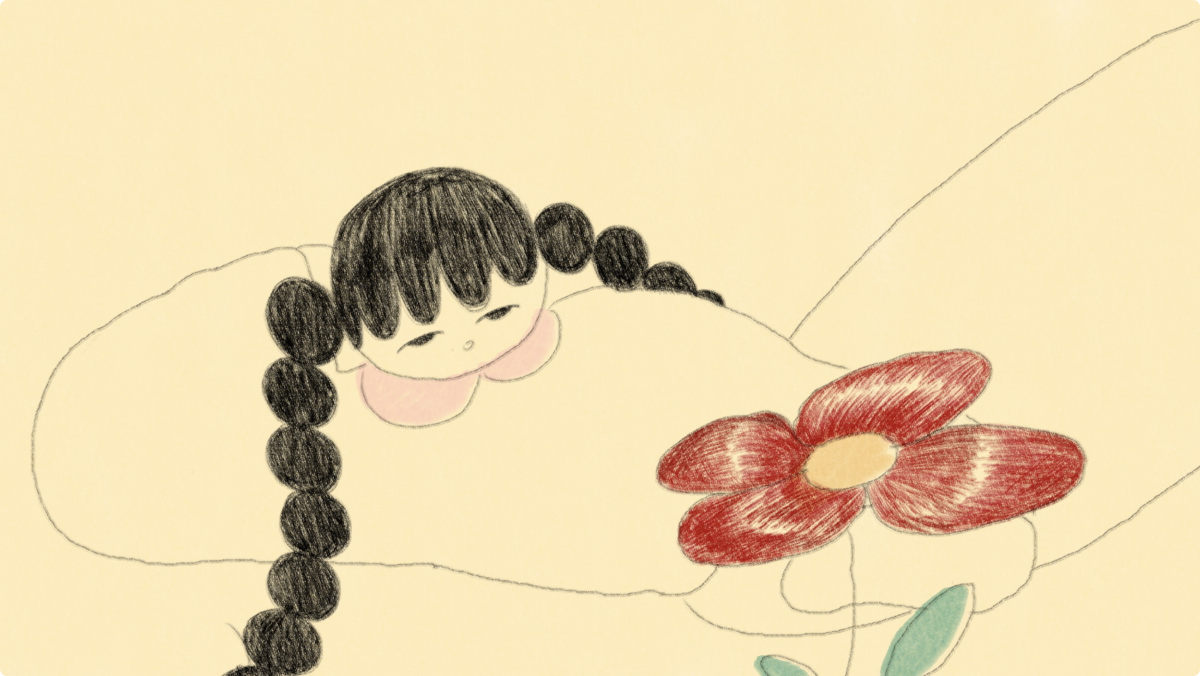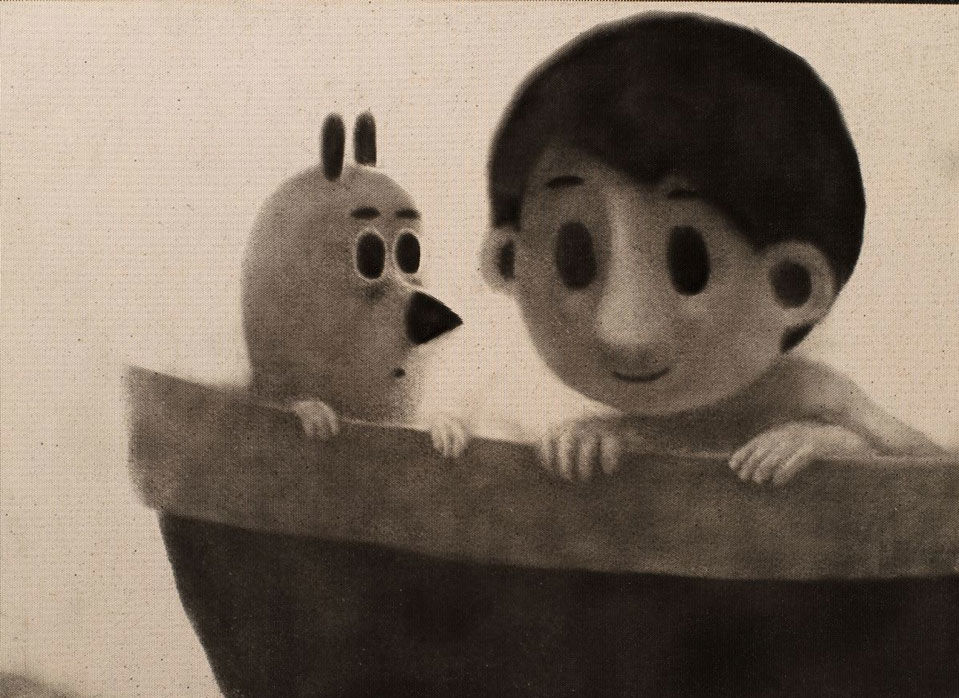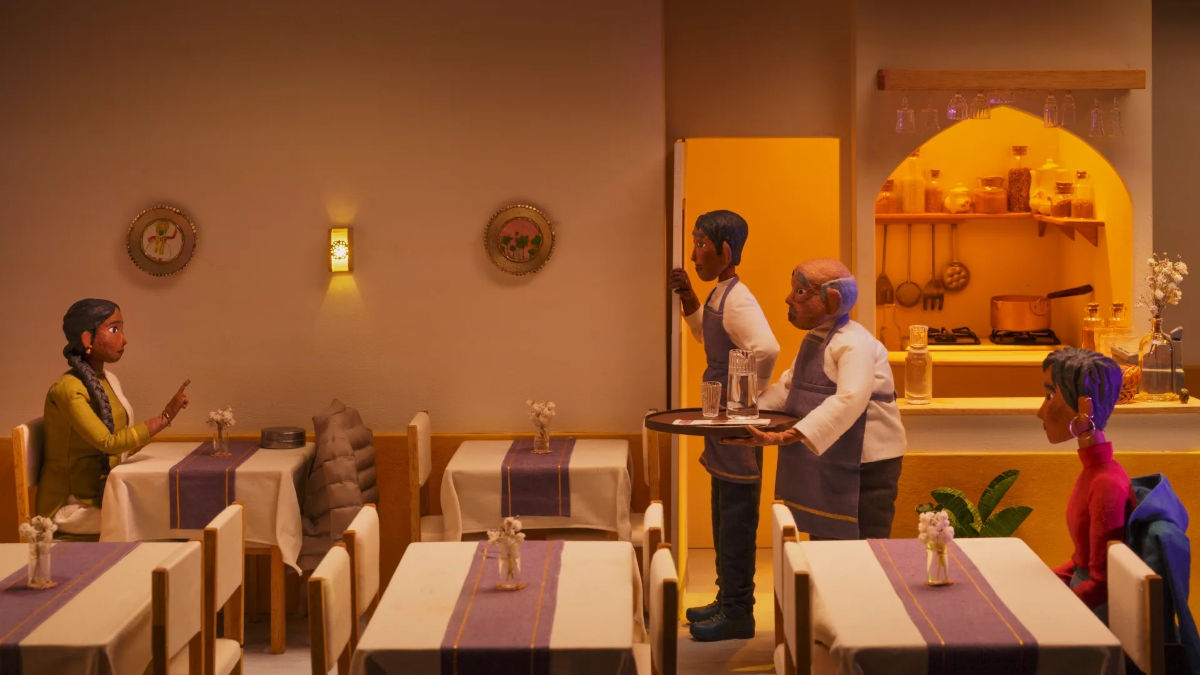Independent Animation Shorts
Sheep, Wolf and A Cup Of Tea... by Marion Lacourt

She had her world premiere at Locarno film festival (Pardi di Domani selection), which she herself describes as "the best premiere I could ever have dreamt of". Considering animation as a medium, not a genre, Paris-based illustrator, artist and director Marion Lacourt (a graduate of École nationale supérieure des Arts Décoratifs (ENSAD), tackles with her first film, Sheep, Wolf and a Cup of Tea... (Moutons, loup et tasse de thé..., 2019) a dreamy environment of a child and his family. And she does it with sensitivity and richness (but still not overabundance) of visuals.
At night, while family members indulge in curious rituals before sleeping, a child invokes a wolf from the bottom of a box hidden under his bed. Disturbing sheep then besiege the door of his bedroom… Here's the film's trailer:
Produced by none other than French production company IKKI Films (responsible for the Oscar-nominated stop-motion film Negative Space), Sheep, Wolf and A Cup of tea is a 2D family story, inadvertently inspired by the director's own experience. "Some scenes I observed around me as a kid which had a huge impact on the way I developed my imagination" Marion Lacourt tells Zippy Frames. Her grandmother using tea bags on her eyes before sleeping at night was a ritual she had always observed.
"It was a really particular moment for me. The ritual itself was kind of surreal but it was also about the light around her. She was in her chair in the living room and there was only a little lamp lit right next to her, everything else around was dark. It seems like the time was stopping the moment she was sitting there with these two little white blocks on her eyes. She was glowing. I loved this picture. This is the kind of atmosphere I wanted to restitute through my project".
Armed with a filmmaker's imagination, Lacourt wanted to work on the dreamy night experience for a long time, trying to explore the immersion feeling as you slowly fall into sleep. Two things helped. "I had this collection of intriguing documentary notes and drawings about pre-sleep rituals on one side, and a dreams diary made of monotypes on the other" Lacourt explains. The film started as a combination between these two processes.
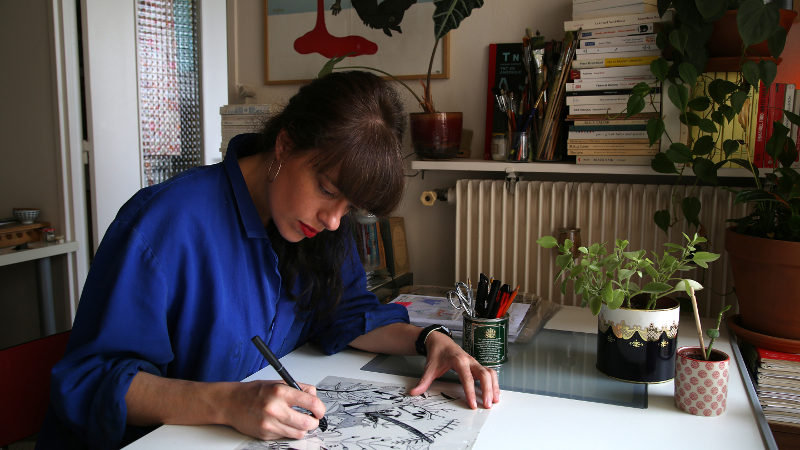
Once she had a script structure, drawing and first animation tests, Lacourt was matched with IKKI Films, and first completed the project development at The Animation Workshop (Denmark). "During that time I also defined the animation pipeline more precisely, splitting it between the direct under the camera animation part I handled myself, and the celluloid animation I shared with four friends. They came to help at different stages of the project, working at Ciclic residency (Vendôme) first and then Komadoli Studio (Paris). The fact we were a very small team allowed me to keep experimenting around the open script I conceived, going back and forth between the writing and the multiplane camera which continuously fed each other. It gave to the film the possibility to grow in a more spontaneous way by keeping including the free association process it was based on all along the production."
Still, free animation process does not imply a total improvisation. Lacourt started out to subvert the traditional bad and scary lonely wolf character. "In real life it needs the other members of its pack to survive", the director states. What she did instead was to concentrate on the sheep image. "There is something frightening for me in the sheep figure as a flock. This vision gives of course a strange echo of the society and its stream. Keeping reproducing what other people are doing around, looking for a “norm” to integrate. As a kid I found it very oppressive and I still do".
Watching the film itself, it makes the case for a continuum between the characters, and your sympathies constantly change sides. "Characters are not good or bad" Lacourt confirms. "They just handle other roles that tell something about the child situation and how he feels. The wolf is the one missing, maybe a dad figure who is not around, but also a friend, a confident, a cozy space where the kid goes. The sheep represents how the family context indirectly tries to make him follow one direction, probably the same the parents did, without considering all the other existing possibilities. But sheep can become wolfs by loosing their skin".
Lacourt conceives the whole thing narratively as loose laysers which progressively through different steps, give access to your true self. This idea had its corresponding version in the film's aesthetics.
"Because of this image of my grandma glowing in the dark I had, I needed to find a way to make the light truly emerge from the night. With the backlighting, the multiplane camera opened this possibility to use the light as a dramaturgical tool just like the line, the colours, the frame, the sound or the editing choices I made" she elaborates. "I quickly realised how much it could participate to the immersion feeling I was looking for".
Her printing practice as an engraver helped as well. "I like to work with a thin and strong line and then combine it with textures and colours. When you are printing in colour an etching piece, you’re gonna have to use a different metal plate for each colour in your picture and then combine these different layers by printing them on the same piece of paper. I basically transferred this principle to the multiplane camera".
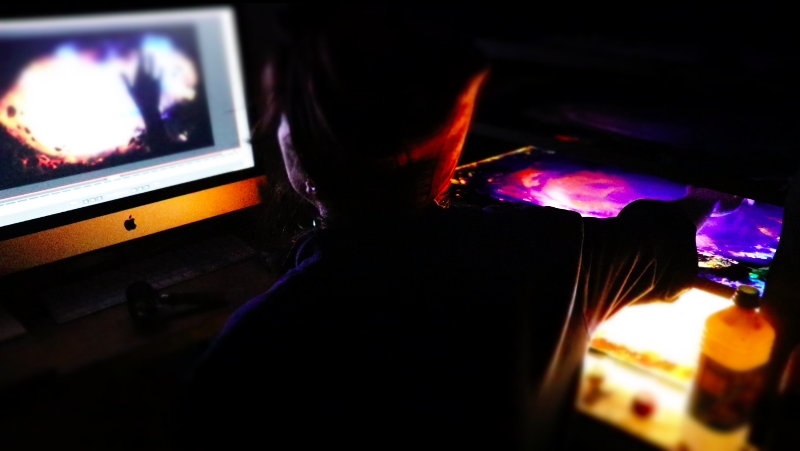
Every colour has its own glass panel in Sheep, Wolf and A Cup of Tea... and the camera above them captures the result of the optical addition of these different elements by the light going through. "It was important to me to keep the potential of direct under the camera animation open. Everyday, when I was handling my inks to create new backgrounds, I was really paying attention to all the little things appearing on the glass panels that could be interesting to preserve when I was erasing some parts of the previous ones. So there is always some residual parts of the film in every background just like in the monotype diary practice I used to have. It works like layers of memories’ fragments, just like a dream."
Particular scenes in the film intensify this feeling, and give a borderline sensation between reality and fantasy, as when the whole family is inside the car and it appears to be an accident. "This is more a mental collision, something you keep being confronted to without any possibly of control in the moment. For me, the car symbolises the kid being able to go wherever he wants through his imagination. It’s a way of transportation in his inner universe. In this car sequence, the adults are back on the back seats with their rituals when the kid needs to be far from them. It’s more about an invasive memory following him than one he chooses to return to. That’s why he switches to another consciousness level opening the cosmic glove box to figure out a way to solve that."
Lacourt describes the whole film as a series of boxes connected by this type of transition times, which she admits could have been its Achilles heel in the editing room. "At the animatic stage the rhythm wasn’t right. But I knew the structure was, always between 12 and 13 minutes" She made the creative choice to edit all along production.
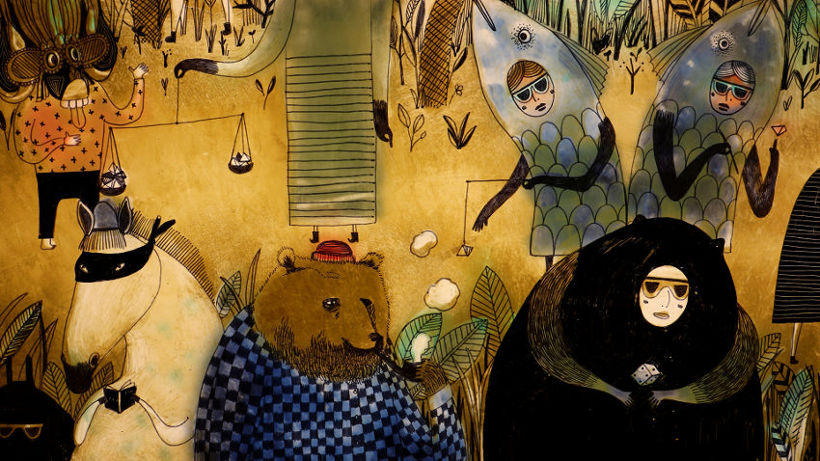
In the sound department, Lacourt found the perfect match between sound designer and music in the person of Nathan Blais, who was being able to switch between the two and combine them. "At the very beginning of the project, I already had this basic idea that the music should be built out of the sound effects developed for the first part of the film. When we observe the different members of the family in their rituals, each of them has specific ambient sounds and noises attached to the objects they manipulate".
Lacourt recorded some of the sounds in her own kitchen, and was also helped by her editor Catherine Aladenise before finally recording the rest with a sound maker. The whole material was given to Blais, plus electronic and noise music references ("I just asked him to have fun", Lacourt adds). The process was gradual, and the same happened with Mathieu Z’graggen, who later developed the sound design and then took care of the sound editing ("He really captured the intent and had a lot of fun searching and assembling the sound textures that matched the best way with the image textures").
This was clearly a labour of love from Lacourt, but at the same time a careful matching of vision and aesthetics. Her painstaking attention to background details ("I can spend hours observing every character doing their things in different corners") at the same time tell how the environment itself evolves the character. "Evolving seems like walking through space, time and thoughts" she explains.
Her own professional development from an illustration artist and engraver to an animation director was somewhat similar. "This film was a real challenge for me because of its form and the technique I developed to be aligned with my intent. The ingredients I mixed are pretty common but not the object I sculpted out of it. It was risky sometimes because during the shooting you need to figure out real fast how long it’s gonna take with the new discovery you just made, and makes totally sense in the film context. This experimental field I explored and accepted as a part of my creative process keeps feeding me."
From observing rituals to writing down her notes to making the whole film, Lacourt emphasizes both the sense of wonder (or "the wonder of the senses") and at the same time, the boxes / layers of meaning to true self. "The film is about these special moments that can make you the person you are" Lacourt explains "This is a strong image for me and what life is about. Habits in your close environment have an influence on you and the way you build yourself, whether you want it or not. But you loose layers progressively through different steps to access to your true self".
The film itself corresponds exactly to the onion-layered shape of the director's intentions, even though here cels and glass make up for the visible layers. Finding your way out of clothes and roles imposed to by others, being able to investigate and be challenged by unknown (and still enchanting) forms, ideas, and characters is at the essence of Marion Lacourt's Sheep, Wolf and a Cup of Tea… Not easy to give away its secrets, but it keeps you hooked in its strangely inviting atmosphere, full of magical images and sounds, from a child's bed to the big space -and back to the sleeping box. It's a trance-inducing work without the morning hangover.
Vassilis Kroustallis
Marion Lacourt is an illustrator, an engraver and by extension a filmmaker living and working in Paris. She graduated from the École nationale supérieure des Arts Décoratifs (ENSAD) in Paris, after studying lithography at the University of Fine Arts of Hamburg. Sheep, Wolf and a Cup of Tea… is her first professional film.
CREDITS:
Moutons, Loup et tasse de thé... by Marion Lacourt (2019, France)
Duration : 12’ (Color, no dialogues)
Production : Ikki Films (Edwina Liard – Nidia Santiago), Co-production : Alpaga Films (David Braun)
Script: Marion Lacourt
Editing :Catherine Aladenise – Marion Lacourt
Music : Nathan Blais
Sound designer: Mathieu Z’Graggen / Foley: Romain Anklewicz / Mix: Régis Diebold
Animators: Marion Lacourt, Camille Authouart, Marine Blin, Hugo Bravo, Lila Peuscet
Image editing: Catherine Aladenise, Marion Lacourt, Compositing: Marion Lacourt / Colour grading: Yves Brua






